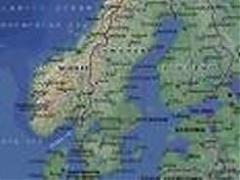Analytics, Baltic, Banks, EU – Baltic States, Financial Services
International Internet Magazine. Baltic States news & analytics
Wednesday, 02.04.2025, 06:11
Analysts: Swedish banks badly exposed to Baltic bust
 Print version
Print version |
|---|
According to figures from Sweden's Financial Supervisory Authority, Swedish banks' lending to the Baltic states totals 500 billion kronor (LVL 31.25 billion), including 80 billion for Nordea, the largest banking group in the Nordic region, 200 billion for SEB and 220 billion for Swedbank. LETA/AFP informs.
"The Baltic countries are Swedish turf for geographical and historical reasons," said Olle Waestberg, state secretary in Sweden's finance ministry from 1991 to 1993 when the Scandinavian country faced its own banking crisis.
Swedish banks moved into Estonia, Latvia and Lithuania 15 years ago when the credit markets there were deregulated after the fall of the Soviet Union, offering growth opportunities for businesses in neighboring Scandinavia looking to diversify and increase their sources of revenue.
By 2008, "Swedbank" accounted for 49 percent of private lending in Estonia, while SEB held a 30.1 percent market share in Lithuania.
Waestberg, who today heads up the Swedish Institute specialized in Sweden's foreign relations, noted that Swedish banks "are heavily exposed and have done most of their business in euros." With the Swedish krona having lost about 20 percent of its value against the euro since September, that means their cost of doing business has skyrocketed.
"Loan losses are on the rise, and there is great uncertainty about the level loan losses will reach in these countries," said Elina Riutta, an analyst at Evli Bank in Finland.
Swedbank, which has 17 percent of its total lending in the Baltics, is the most exposed, followed by SEB with 12 percent and Nordea with three percent, said Riutta.
"The amounts are big - especially for Swedbank and SEB. They have to handle it in one way or another, and that will be a threat to their solidity and lending capacity," Waestberg said.
Masih Wazdi, an analyst at the Financial Supervisory Authority, which monitors 3,900 companies, said that while "the exposures are large in absolute numbers, (they) represent only a small part of the banks' total exposures." "The current situation in the Baltic countries, with annual gross domestic product (GDP) falls of around 10 percent, is of course challenging and the banks will have large credit losses in the Baltics in the coming years."
But since the exposure to the Baltics represents less than 10 percent of the Swedish banking sector, it doesn't represent a threat to the Swedish economy as a whole, where the banking sector accounted for three percent of the Scandinavian country's gross domestic product in 2007.
Nonetheless, a weakened bank sector is not good news for Sweden, which entered into a recession in the second quarter of 2008. There is "great uncertainty in assumptions of coming credit losses, but the Swedish banks are currently well capitalized and should be able to withstand even a very bad development in the Baltics," Wazdi said.
The Swedish government has also presented a scheme to aid the banking sector.
The two most exposed banks, Swedbank and SEB, have recently taken measures to improve their financial situation, with the former withdrawing its proposed dividend for 2008 to beef up its coffers and the latter announcing a share issue in order to facilitate borrowing.








 «The Baltic Course» Is Sold and Stays in Business!
«The Baltic Course» Is Sold and Stays in Business!

